Do you struggle with how to summarize an article without plagiarizing it? And is that a legitimate tactic to employ?
Summarizing is not only acceptable but also a crucial writing technique to use when creating your content.
However, how to do it correctly to avoid Google penalties is what matters and, at the same time, is the main reason why there is so much buzz on this topic.
To help you understand the difference, we’ll explain what summarizing and plagiarism are.
In addition, you’ll learn how to summarize an article without plagiarizing using the top 3 techniques that are easy to implement.
Let’s start!
What is Summarizing?
Summarizing is the process of shortening a long piece of writing and boiling it down to its main points.
You can do this by pulling out the essential parts of the text and putting them in a shorter form.
Summarizing is valuable because it helps you understand and remember what you've learned, and it is often used as a method for repurposing existing content for social media or other distribution channels.
What to Avoid During Summarizing?
Here are the top 7 things you should avoid when using the summarizing technique in your writing:
1. Don't change the original meaning of the text.
2. Avoid repeating exact words from the original text.
3. Avoid including information that isn't included in the original text.
4. Avoid adding your own thoughts or interpretations.
5. Avoid using long sentences.
6. Don't include irrelevant information.
7. Avoid using jargon or technical phrases.
For better understanding, here is an example of correctly used reference that summarizes only a portion of the mentioned study.
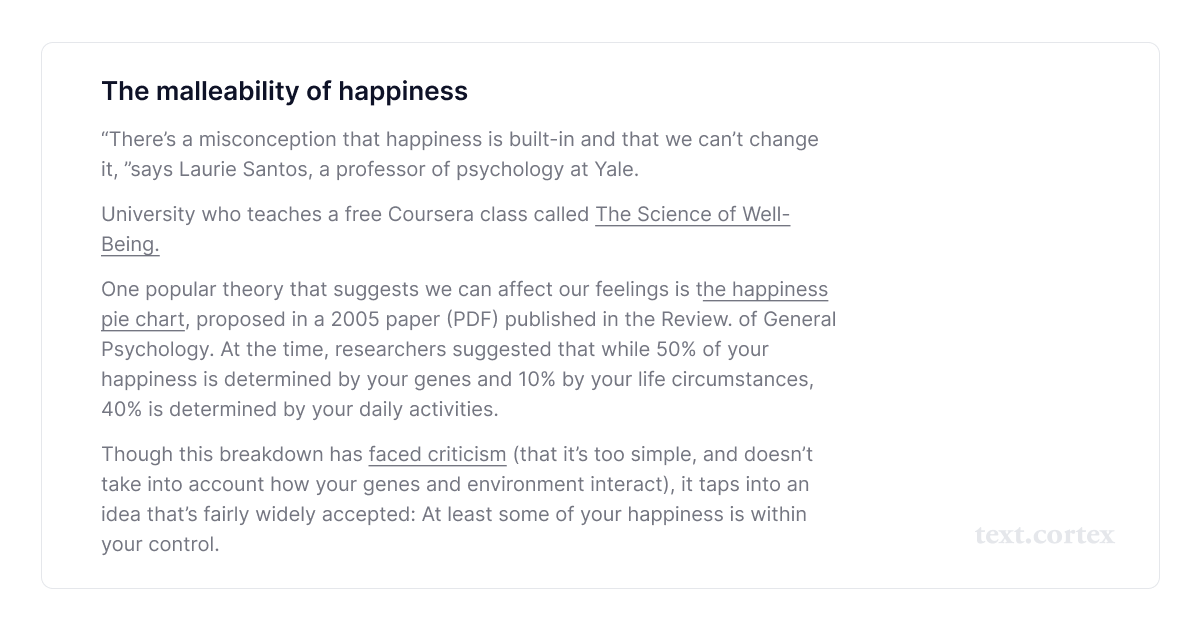
Now, let’s learn a bit about plagiarizing.
What is Plagiarizing?
Plagiarism is the practice of passing off the words or ideas of another person as one's own. You can easily fall into plagiarism by:
- directly copying the words or thoughts of another person,
- incorrectly paraphrasing those ideas, or
- using the research of another person without giving them credit.
The 3 Ways You Can Plagiarize Unintentionally
Even though we've already talked about what plagiarism is, here's a clearer explanation of how you might accidentally do it.
1. Failing to properly cite sources — Plagiarism can happen if a writer doesn't correctly give credit to the sources they use. Include the author's name, the source's title, the date it was published, and, if available, its URL or page number when citing a source.
2. Paraphrasing without citing sources — Writers still have to give credit to the sources they use when paraphrasing. Even if the words are not in the same order, the ideas are the same, right?
3. Copying too closely — Even if a writer gives credit to the source, plagiarism can still happen if they copy the original too closely. Therefore, instead of just copying the piece, writers should try to explain the idea in their own words and in their own manner.
Again, for educational purposes, here is an example of obvious plagiarism.
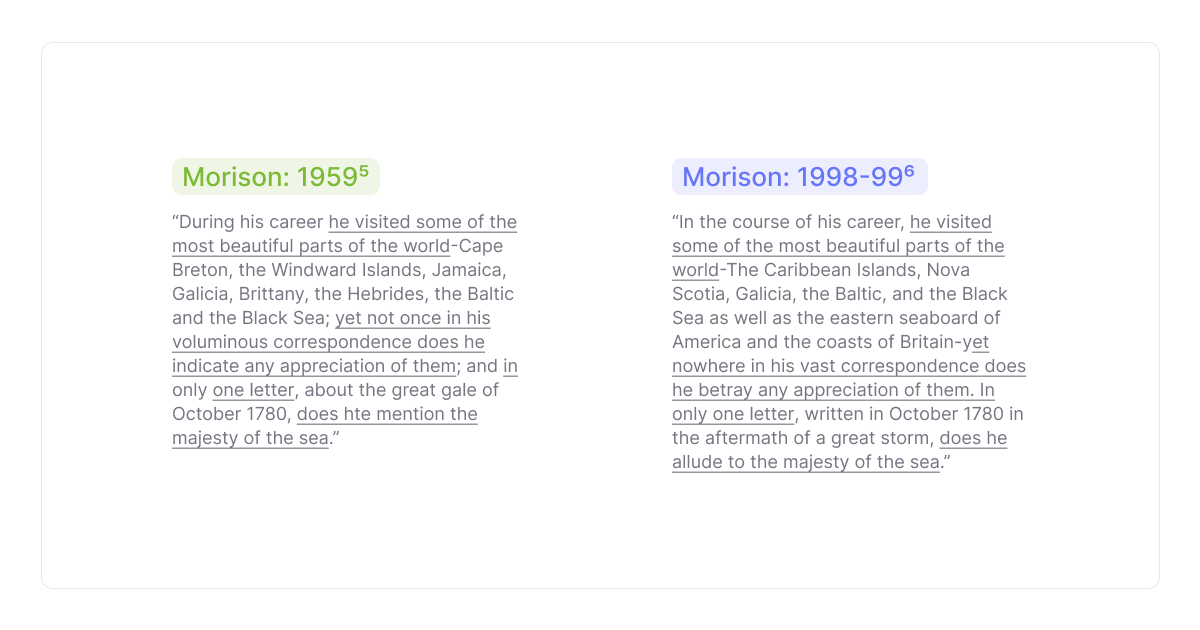
Let's learn how to summarize an article without plagiarizing now that we know how to tell the difference between the two.
How To Summarize an Article Without Plagiarizing — 3 Techniques For Original, Yet Effective Output
To summarize the article correctly, most professional writers utilize a combination of these 3 writing techniques: summarizing, paraphrasing and quoting.
Let’s check how to implement them in your writing to ensure your brief pieces of articles are plagiarism-free.
1. Summarizing Technique — Finding The Core Concepts and Condensing Them Into a Concise Summary✔️
A summarizing is a writing technique that you are probably unconsciously using more than you notice.
We use it in daily conversations, when writing reports, introductions and conclusions for the article, when taking notes for study, etc.
And as you may suggest, the key element of any summarizing technique is that you fully comprehend the piece before even starting to extract its key points.
Here are the steps to include when using the summary technique.
1. Read and Comprehend The Article
To successfully summarize it, you first need to gain a comprehensive understanding of the article and its main points. Here are some essential elements to pay attention to:
📍Identify the key arguments and evidence presented in the article.
📍Identify the tone and style of the article.
📍Analyze the article and form opinions on the topic.
📍Identify any potential biases in the article.
📍Gain an understanding of the author's perspective.
📍Identify any inconsistencies or inaccuracies in the article.
📍Capture the author's intended message.
Pro Tip
These days, relying on the time-consuming manual method of summarizing is unnecessary because so many AI-powered tools are available to help you get a condensed version of your articles.
The TextCortex plug-in is one example of such a tool.
To use its "Summarizing" function, highlight the text you wish to condense and click the corresponding option in the rewriting menu.
From this point you can either copy the text and paste it for comparison with the original version, or to click on the output to adopt changes.
Furthermore, the TextCortex add-on enables you to check the readability score of the final version of your output.
Now you have everything you need to actually start summarizing the text.
2. List the Article's Main Points
To correctly extract the most vital aspects of an article make sure to:
✒️Briefly state the critical points in one sentence.
✒️Put ideas into groups and establish a logical progression.
✒️Make sure that you give each point a clear and concise explanation.
At this point, you have the summary of an article. However, your job is not done yet. Now we have to pay attention to the quality and uniqueness of the output.
2. Paraphrasing Technique — Rewriting The Original Text In Your Own Words and Without Changing Its Meaning ✔️
Once you have established the main points, paraphrase them in a coherent and distinctive storytelling format.
By using your own words, you can add a unique perspective from your viewpoint to the summary.
You should still use synonyms, alternative word choices, and word order to prevent plagiarism. For instance, UsingEnglish.com is an excellent platform for checking alternative word choices when summarizing.
Additionally, it's critical to preserve the overall meaning of the article.
Pro Tip
If you find that manual paraphrasing takes a lot of time or it is not always in alignment with your creativity, the TextCortex add-on offers the “Rewrite” option.
Highlight the sentence or paragraphs and choose the option from the menu.
The TextCortex will provide suggested output in the extended window, below the rewriting menu.
From here you can further tweak your content using other TextCortex features available in the rewriting menu such as tone of voice, expand, autocomplete, translate, etc.
3. Quoting — Referencing and Quoting Extensively From The Original Source While Maintaining Proper Citation ✔️
Now that you have what you need, it is time to give credit to the source you used as a guide for the shorter version of the article you are summarizing.
To properly cite a source in the summarized version of the article, you can use any of the following formats.
1. Mention The Source in The Summary Output
Include the author's last name and the year of publication at the end of the sentence where the source is referenced.
Example: “Recent studies have shown that climate change has a significant effect on global temperature (Smith, 2020)”
Likewise, you can also copy a sentence or paragraph word for word from the original text if you want to focus on a particular idea the author expressed.
In this situation, you should enclose that passage in parentheses and identify the author of the text as well as the source of the quotation.
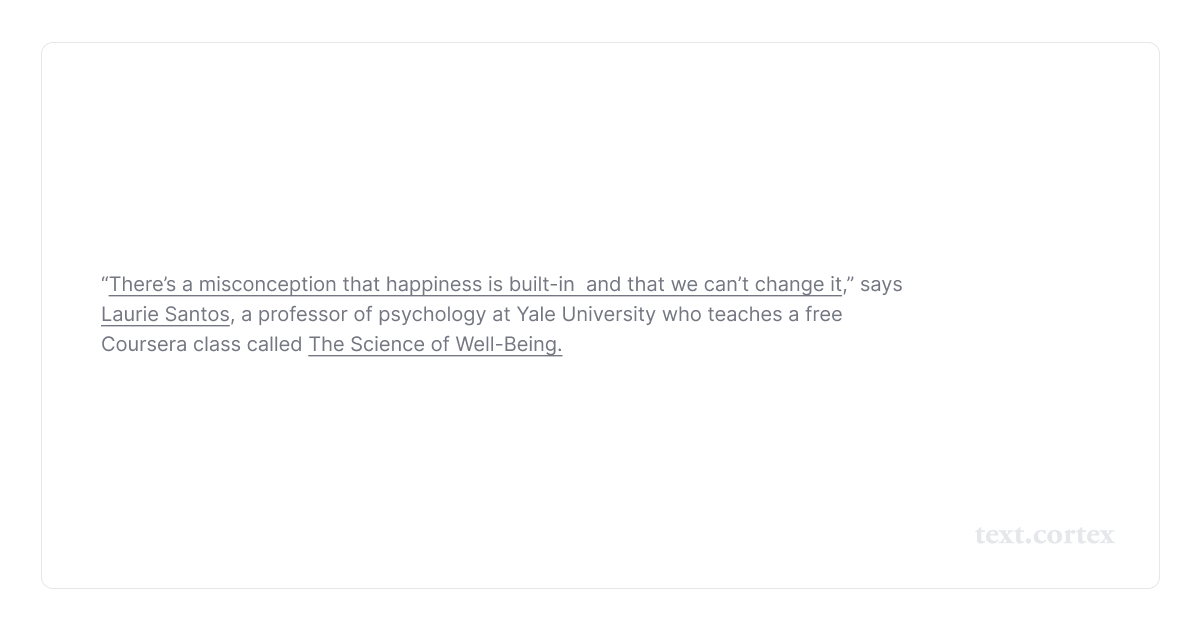
2. Link The Source in The Summary Output
Linking to the article itself in your output after summarizing is another, very popular method for giving credit to the original author.
To accomplish this, choose a word or phrase and include a link to the relevant article.
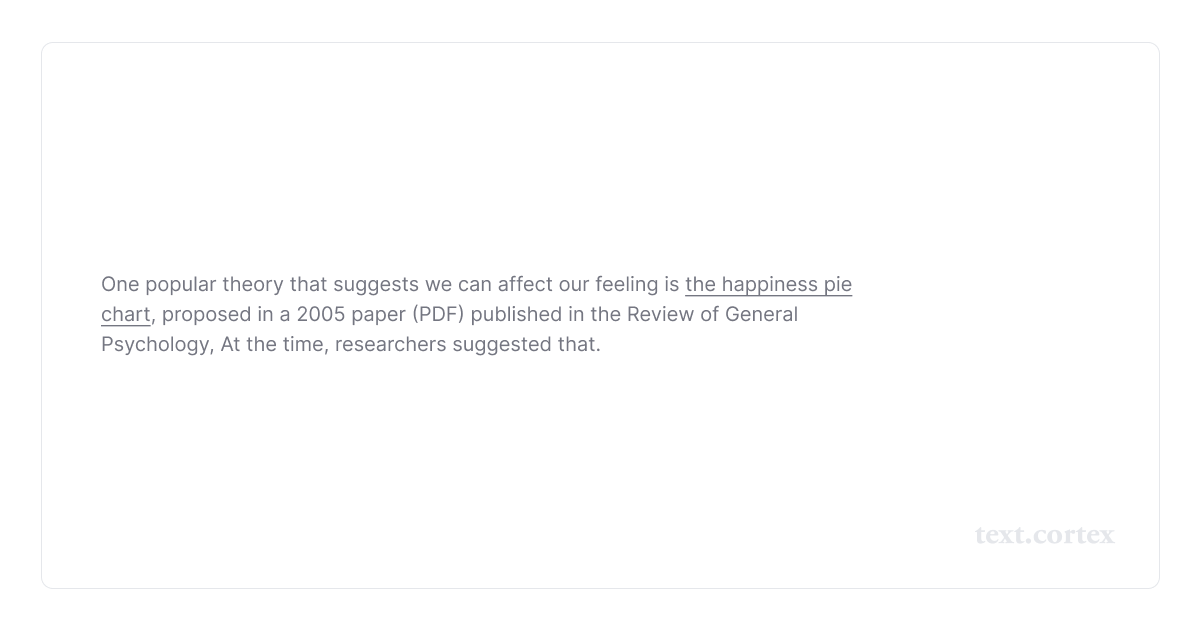
This method is commonly used when including statistics or facts in your pieces.
3. Provide The Full Reference For The Source in The Reference List at The End of The Article
Including the author, the publication year, the title of the article, and the specific page where the information was obtained is the third way to cite the author of a referenced article.
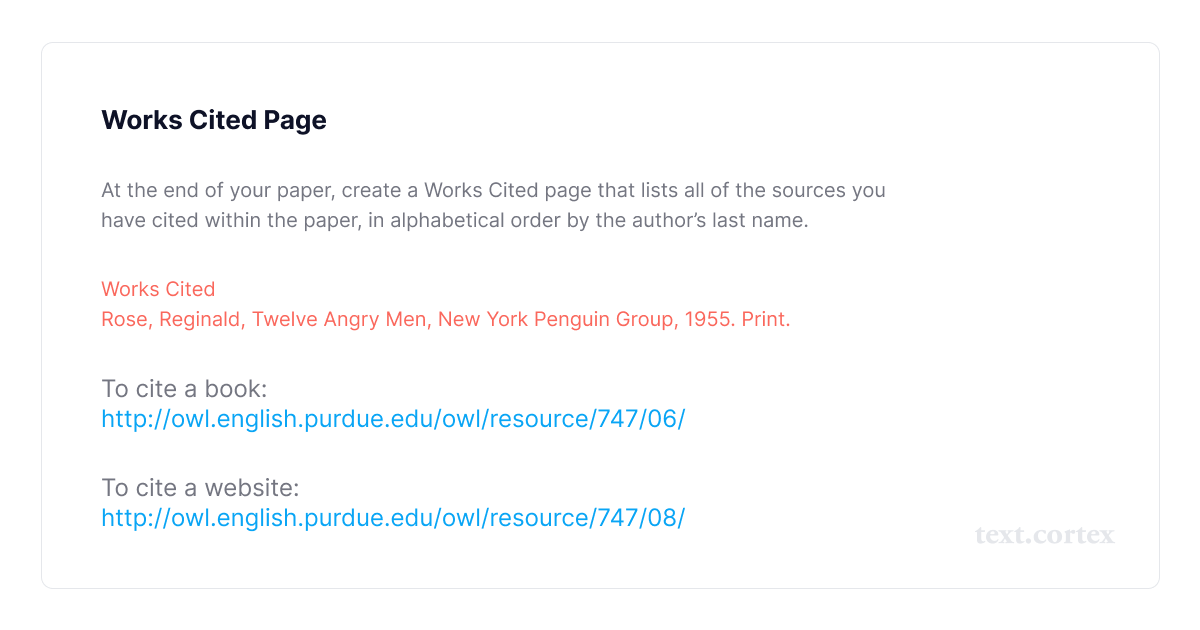
Although we typically see this style of quoting in essays or academic writing, using it in other contexts is perfectly acceptable.
You are not plagiarizing as long as you are properly citing the source of your summary.
Learn How to Summarize an Article Without Plagiarizing Using TextCortex
You can significantly improve the quality of your content once you understand how to summarize an article without plagiarizing.
This is because your content will acquire a broader, deeper, more sophisticated undertone while maintaining the authority of your own articles.
Your ideas and point of view can be quickly supported by pertinent data, which makes the research process much more enjoyable.
All of this is even more valid if the process of summarizing and adjusting content to fit the original idea in various narratives can be done much faster.
You can accomplish all your writing tasks in 70% less time by utilizing a TextCortex add-on.
Why?
The answer is simple — because within same textbox you can:
👍Rewrite in bulk for better context.
👍Expand the sentences for more details.
👍Summarize the original piece to its main points.
👍Change the tone of voice to fit the desired outcome.
👍Autocomplete random thoughts into coherent paragraphs.
👍Write blog posts from a 5-word-concept.
👍Transform bullets into emails.
You can also bring AI assistance to more than 30 of the most popular platforms, such as LinkedIn, Facebook, Notion, Gmail, Google Docs, and Hemingway, amongst others.
What Do You Need To Implement TextCortex add-on?
✅ A necessity to expedite the pace of your writing process.
✅ A desire to learn more about the latest AI capabilities.
✅ Downloading and using its free version will not cost you a dime.
✅ No need for credit card information on the sign-up.
Interested to test it out?
Get your TextCortex free account to claim your 10 free daily creations which give you access to 60+ AI templates and 9+ rewriting features, to boost your content right away.
FAQ
Can Summaries Be Plagiarized?
Yes, it is possible to plagiarize summaries. Search engines will label your work plagiarism if you steal the ideas or work of someone else and claim them as your own.
An example is not giving proper credit when using another person's summary directly.
Furthermore, plagiarism includes paraphrasing someone else's work without giving proper credit to the original author.
Whose Fault Is Plagiarizing?
Plagiarism is the responsibility of the author who copied another's work.
Plagiarism is considered a form of academic dishonesty and a way to cheat or lie.
In some cases, the institution or group that let the plagiarism happen could also be held responsible.
What is The Minimum Penalty For Plagiarizing?
The minimum punishment for plagiarizing someone else's work varies from case to case and jurisdiction to jurisdiction.
Punishment can range from a verbal or written warning to a financial penalty or even a lawsuit.
Keep Learning
Paraphrasing Vs. Summarizing: The Difference And Best Examples
Will Google Penalize AI Content: One Question You Don't Want To Ask Anymore

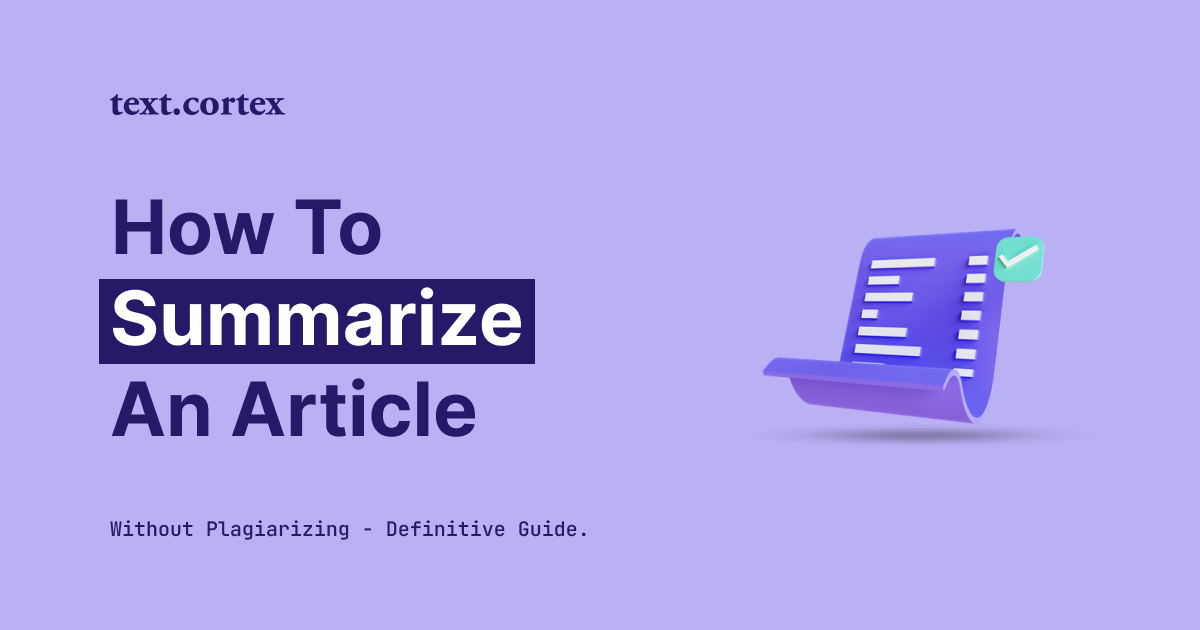

.png)

